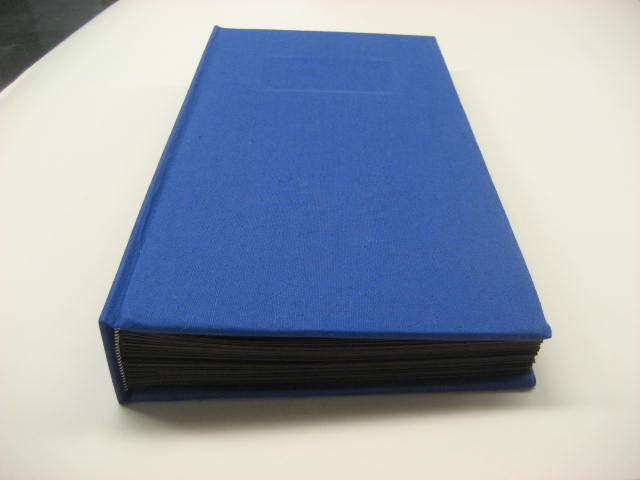by Craig Fansler
Preservation Librarian
Z. Smith Reynolds Library
Wake Forest University
During the summer of 2010, a colleague brought me what appeared to be an old scrapbook. Inside this scrapbook was an assortment of greeting cards from approximately 1906-1946, all printed by the Cuala Press. The Cuala Press (pronounced “coo-la”) was an Irish industry that was begun by two sisters of William Butler Yeats: Elizabeth and Lillie. The Cuala Press was strongly formed in the same conceptual path as William Morris’ Arts and Crafts Movement in England, and Elizabeth Yeats actually studied with Morris. The press was all things Irish: Irish poetry, letterpress printed on Irish paper, hand-bound with Irish linen thread which was then hand-colored by Irish artists. The cards are a thing of beauty and mostly contain Irish sayings and poetry, some in Gaelic.
Seeing this sample book and realizing it was on acidic paper, I realized it was a great opportunity for a restoration project. The project would involve two tracks: one to remove the cards and restore and reconstruct the binding; and another to digitize the book and cards for a digitization project. Before we took any direct action, we photographed the entire book and produced an “e-book” of the piece as it was. This provided an easy way to see and page through the book. It also provided a photographic record to use as we pieced the restored book back together. I began working with a student to remove the cards one by one. The cards were glued into the original book, so some of the paper lifted off with the cards.

Each of the cards were placed in archival envelopes we made to protect them and to keep them in small batches for scanning.

Each card was also cleaned using a white eraser to remove any dirt. For the digitization project, we scanned each card at a 600 dpi resolution and stored these on a hard drive. We tracked this project and the progress we made using a spreadsheet. This spreadsheet listed each card with as much metadata as we could collect: artist, poet, size, image description, etc.
On the other side of the project, I dis-bound the book and discarded the text block. I would retain the boards and planned to re-cover them with new book-cloth similar to the original.

I ordered Canson Mi-Tientes paper for the text block and sewed these new pages together at the same thickness of the original, using Irish linen thread, of course! .

I lined the spine with Irish linen. From Talas, I ordered a Cialux bookcloth similar in color and texture to the original, and re-covered the boards. I then reunited the text block with the boards.

The project then was completed by placing the cards back inside the restored book using See-Thru Mounting Ccorners in their original position.
The cards now have a safe environment in which to live out their lives both in the real and digital realms. This was a very satisfying project because it combined tw0 of my interests: hand-on preservation and digitization.


